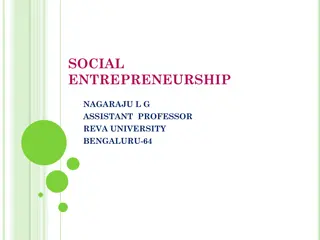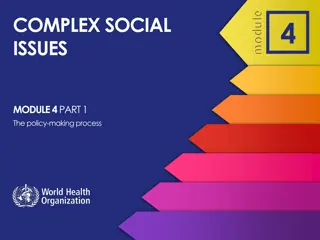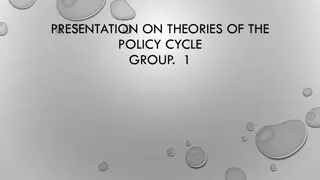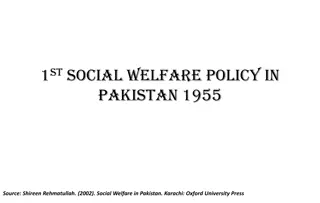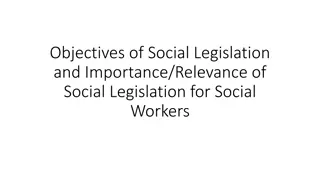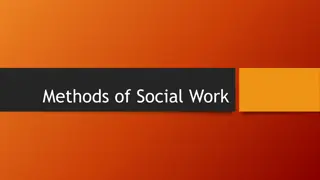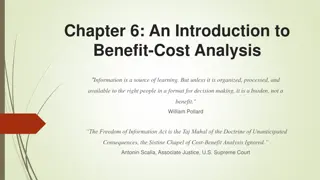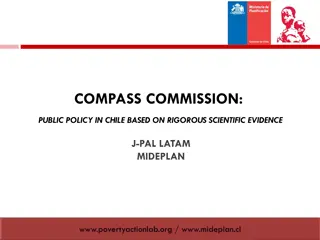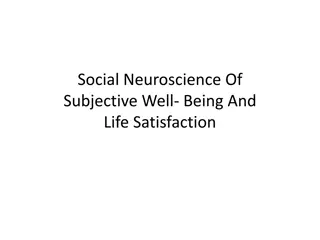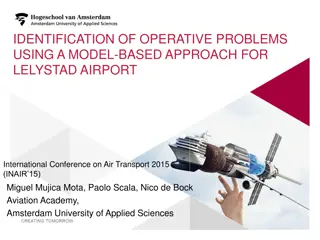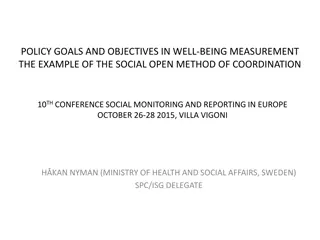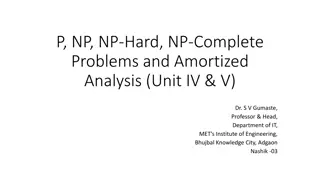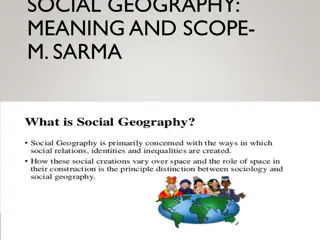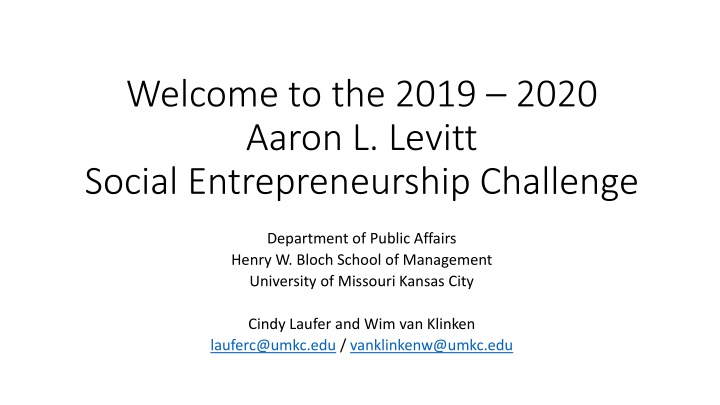
Innovative Solutions to Social Problems and Policy Environment Analysis
Innovative solutions to social problems are crucial for creating lasting change, considering factors such as community, social ecosystems, and policy environments. Conducting a policy environment assessment helps in refining focus areas by understanding barriers and related issues. Assessing policy fields aids in identifying stakeholders' power, resources, and relationships within different policy domains.
Download Presentation

Please find below an Image/Link to download the presentation.
The content on the website is provided AS IS for your information and personal use only. It may not be sold, licensed, or shared on other websites without obtaining consent from the author. If you encounter any issues during the download, it is possible that the publisher has removed the file from their server.
You are allowed to download the files provided on this website for personal or commercial use, subject to the condition that they are used lawfully. All files are the property of their respective owners.
The content on the website is provided AS IS for your information and personal use only. It may not be sold, licensed, or shared on other websites without obtaining consent from the author.
E N D
Presentation Transcript
Welcome to the 2019 2020 Aaron L. Levitt Social Entrepreneurship Challenge Department of Public Affairs Henry W. Bloch School of Management University of Missouri Kansas City Cindy Laufer and Wim van Klinken lauferc@umkc.edu / vanklinkenw@umkc.edu
Innovative solutions Innovative solutions to social problems are more effective, create deeper change, and are more long-lasting, when they take into account: a clear understanding of the people experiencing the issues, the community, the social ecosystems, and the policy environment that are often at the heart of these issues. Attention must be paid to potential partners, competitors, and the forces that encourage or discourage entry into the system. Barreiro & Stone, 2013
Short Update on Status 2 minutes per team
Policy environment assessment Needed because Likelihood other interested parties already have been pursuing changes to resolve the issue. What were their barriers? What were related issues? Helps refine the issue you should primarily focus on.
Policy field analysis Assessment of stakeholders, their power and resources. Policy fields: International, national, state and local structures of roles and relationships among actors, e.g. people, organizations, and institutions, in a substantive policy area in a particular place. They vary by place, they are dynamic, i.e. not static, they are dualistic, i.e. actors shape and are shaped by them.
Policy field analysis steps 1. Identify the particular substantive policy issue and its policy domains (see graph from culturaldevelopment.net.au) What policy domain does your venture issue address? Are there other important policy domains that impact your issue? Policy domains are interconnected and at times at odds with one another. Brainstorm list of actors, organizations, and institutions involved Understand their interest or stake in the issue and their current and past activities Understand laws and regulations, administrative authority, and public funding streams Within the state and local context, determine what organizations and groups have interest in and influence over this problem, e.g. non-profit institutions and alliances, foundations, other networks. Summarize results of policy field analysis 2. 3. 4. 5.
Summarize results of policy field analysis Describe Opportunity Describe Constraints Ideas for Overcoming Constraints Policy domain Laws or regulations Administrative authority Funding Local networks
How do these findings impact: Your issue Your opportunities
Competitive Forces New Market Entrants Substitute Products Power of Suppliers (incl. Funders) Power of Buyers Rivalry
Threat of new market entrants Are there established relationships, mandates, or funding flows that create important barriers? How important are economies of scale, established patterns of relationships, and reputation in this field?
Threat of substitute products What other formal or informal entities are providing similar programs, products or services? Does the venture offer something truly unique?
Bargaining power of suppliers Are there only a few potential funders for your venture? Do they have many choices of entities to fund? Have they already established relationships with existing organizations or groups in the field? How about paid or unpaid labor markets?
Bargaining power of buyers Are there only a few buyers in your target market or many? Do they have many choices or only a few from which to purchase?
Existing competitive rivalry What turf issues exist in your venture s problem area? Is there a set of well- established programs who have agreed upon who does what or are there many programs competing for the same turf?
How do these findings impact: Your issue Your opportunities
Next Workshop ~ March 21 Read chapter six Creating A Social Venture Feasibility Plan Start drafting your plan based on the provided outline



